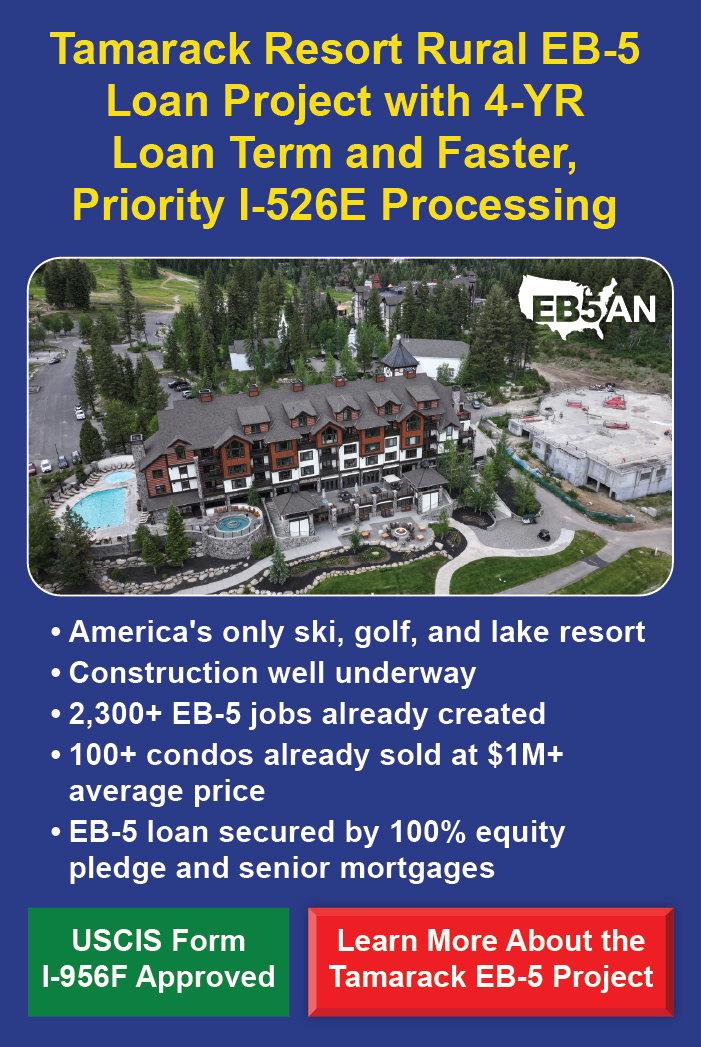
EB-5 investors looking to partner with regional centers to meet the EB-5 investment requirements must perform due diligence before making their selection. As part of the due diligence process, the regional center’s repayment track record is essential as it shows the regional center’s ability to manage funds well.
Knowing this helps maintain the trust that your money is in safe hands. It also increases your chances of getting a successful approval from USCIS. This article explains the EB-5 repayment process and points out how you can assess a regional center’s repayment track record.
Understanding the EB-5 Repayment Process
Due Diligence and Repayment Track Records
Repayment vs. Redeployment
EB5AN Has a Strong Repayment Track Record
Understanding the EB-5 Repayment Process

Repayment in EB-5 investments means the process of returning your money after the project’s completion. It involves an interaction between a job-creating entity (JCE) and a new commercial enterprise (NCE). The JCE is a business or project that receives investment funds through the NCE. It then uses these funds to meet the 10 full-time positions per investor EB-5 program requirements.
On repayment, the JCE repays the loan to the new commercial enterprise, which the regional center manages. The NCE then returns the funds to you. The process ensures that investors eventually get their money back if the project is successful.
Below is a simplified breakdown of the process:
- The investor’s funds are loaned to the JCE to create jobs.
- After the loan term ends, the JCE repays the NCE. This repayment usually happens after the project’s goals are met.
- Once the NCE receives the funds, it returns the money to the investors. This cycle helps maintain the investment’s “at-risk” status, a requirement for the EB-5 program.
Regional centers play an important role in EB-5 investments. They manage projects that create jobs and attract investor funds. These units act as intermediaries between investors and job-creating entities, and their main job is to ensure projects meet EB-5 requirements.
Each EB-5 project may have a different exit strategy. The regional center’s specific project exit strategy also governs the terms of repayment. You can usually find this information in the offering documents and business plan. To fully understand these terms, you should consult an EB-5 immigration attorney to help you review the documentation before you invest.
Due Diligence and Repayment Track Records
Due diligence is crucial for EB-5 investors trying to decide on a regional center. By assessing the regional center’s track record, you can avoid making financial commitments that do not yield favorable results.
Foreign investors can perform due diligence by researching the regional center’s history. You can check their past projects and repayment records, looking for regional centers that have consistently returned funds to investors. A strong repayment history shows reliable fund management and successful project completion.
Next, foreign investors can request detailed financial reports and repayment schedules. These documents provide insight into the regional center’s performance. If a regional center is unwilling to provide detailed financial reports or repayment schedules, this could be a red flag.
Another important step to take is hearing about past investors’ experiences. Their feedback can reveal how the regional center handles investments.
Finally, the regional center’s compliance with EB-5 regulations must be verified. Ensure they have met job creation and investment requirements in past projects.
Repayment vs. Redeployment

In regional center investments, the regional center typically assumes the role of the NCE, loaning your funds to the JCE to use for the investment project. After the project’s completion, ideally, you should get your capital back with returns on the investment.
However, your investment must stay “sustained” and “at risk” for at least two years. Typically, a five-year loan term can meet this requirement. It allows you to file and receive approval of your I-526E petition, live in the U.S. as a conditional resident for two years, and then file the I-829 petition.
Delays in processing times and visa availability can complicate this process, as longer wait times may make the initial loan terms insufficient. To mitigate the risk, your funds must remain invested until you complete your two-year residency and file the I-829 petition.
Redeployment provides a solution by reinvesting funds into new projects. This keeps your investment compliant with EB-5 requirements if the loan is repaid earlier than the required timeframe.
While redeployment may pose an additional risk to investors, keeping your investment “at risk” and compliant through redeployment reduces the risk of denial of your I-829 petition due to premature repayment of the initial investment. Essentially, regional centers with premium redeployment strategies offer investors flexibility and security, regardless of changing timelines.
EB5AN Has a Strong Repayment Track Record

Safeguarding your EB-5 investment requires a thorough review of regional centers, especially their repayment history. A strong repayment track record indicates good management skills and can reduce financial risks.
EB5AN takes pride in sponsoring only the strongest EB-5 projects in the market. The success of our earlier projects such as VUE Sarasota and Saltaire St. Petersburg is proof that we are committed, along with the developers we partner with, to the financial and immigration success of our investors.
To learn more about how to make a low-risk EB-5 investment, schedule a free consultation with our expert team today.











